I am working on a new series of Decoded posts, which will be compiled into a reference library addressing each of the code requirements related to door openings. I would love your feedback on this initial sample…did I miss anything on the topic of closing speed? Is there something I should change about the format of these posts?
~~~
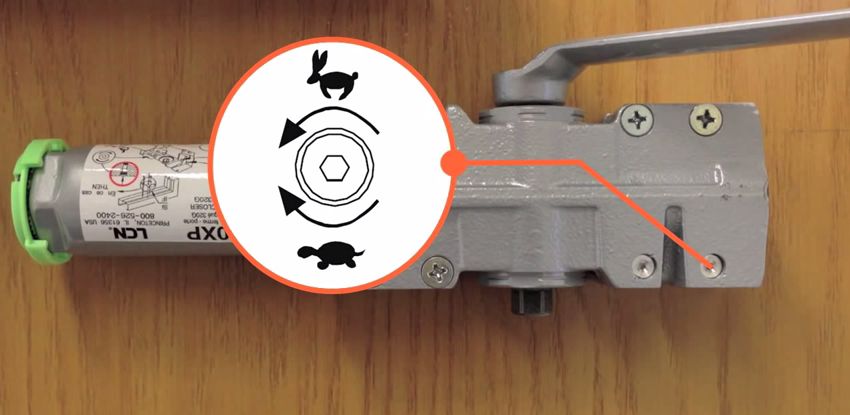 To enhance accessibility and reduce the risk of injury for building occupants, the speed at which a manually-operated door or gate closes is limited by the accessibility standards. The closing speed of a door equipped with a door closer or spring hinges is not currently addressed in the model codes, but is specified by the ADA and A117.1 standards as follows:
To enhance accessibility and reduce the risk of injury for building occupants, the speed at which a manually-operated door or gate closes is limited by the accessibility standards. The closing speed of a door equipped with a door closer or spring hinges is not currently addressed in the model codes, but is specified by the ADA and A117.1 standards as follows:
2010 ADA Standards for Accessible Design
404.2.8 Closing Speed. Door and gate closing speed shall comply with 404.2.8.
404.2.8.1 Door Closers and Gate Closers. Door closers and gate closers shall be adjusted so that from an open position of 90 degrees, the time required to move the door to a position of 12 degrees from the latch is 5 seconds minimum.
404.2.8.2 Spring Hinges. Door and gate spring hinges shall be adjusted so that from the open position of 70 degrees, the door or gate shall move to the closed position in 1.5 seconds minimum.
~~~
2017 ICC A117.1 Accessible and Usable Buildings and Facilities
404.2.7 Closing speed. Door and gate closing speed shall comply with 404.2.7.
404.2.7.1 Door and gate closers. Door and gate closers shall be adjusted so that from an open position of 90 degrees, the time required to move the door or gate to an open position of 12 degrees shall be 5 seconds minimum.
404.2.7.2 Spring hinges. Door and gate spring hinges shall be adjusted so that from an open position of 70 degrees, the door or gate shall move to the closed position in 1.5 seconds minimum.
Note: In the 2009 edition of this standard, Section 404.2.7 did not specifically reference gates – only door closers and door spring hinges were addressed. The words “and gate” were added in the 2017 edition to both subparagraphs.
~~~
The closing speed requirements of these standards are aligned, with the only difference being the section number. For doors or gates equipped with door closers, the minimum time for the door to close from 90 degrees to 12 degrees is 5 seconds. If a door or gate has spring hinges, the minimum closing time from 70 degrees to the closed position is 1.5 seconds. These are minimum requirements; a longer closing cycle is also acceptable.
The closing speed requirement can easily be met by adjusting a door closer, using the adjustment valves to limit the flow of fluid and slowing the closing speed. For most closers, there are separate adjustments for the main speed and the latch speed. During the closing cycle, the closer should maintain a uniform closing speed until within a few degrees from the latch. In this position, the latch speed will ensure the door closes firmly and latches without slamming. The spring power adjustment should not be used to adjust the closing speed, as the spring controls the closing force, not the speed.
At one time, it was not uncommon for doors on an accessible route to be equipped with delayed action closers, which delay the beginning of the closing cycle for 1-2 minutes when the door is opened to the fully-open position. While there may be some doors for which delayed action closers would be a good application (ex. a tub room in a nursing home), this feature is not required by the accessibility standards, and can even hinder the operation of some doors.
Although spring hinges are not prohibited by the accessibility standards, their use on accessible doors should be carefully considered, as they do not offer the same level of door control provided by a door closer. If spring hinges are used on fire doors, Annex A of NFPA 80 recommends that spring hinges should be adjusted to achieve positive latching when allowed to close freely from an open position of 30 degrees.
Note that both of the accessibility standards referenced in this article exempt doors, doorways, and gates that are designed to be operated only by security personnel from several of the accessibility requirements, including the closing speed limitations. Examples of security personnel include guards at security gates, corrections officers in detention facilities, and bailiffs in courthouses. The intent is for security personnel to have sole control of the doors that are eligible for this exception. It would not be acceptable for security personnel to operate doors for people with disabilities, while other building occupants operate the doors themselves.
For more information about the requirements for the closing speed of doors and gates, refer to the applicable codes and accessibility standards, or contact the Authority Having Jurisdiction (AHJ) for assistance.
Resources:
- Download the ADA Standards for Accessible Design by visiting ADA.gov.
- For more information from the U.S. Access Board, visit the Guide to the ADA Accessibility Standards.
- ICC A117.1 may be purchased from the International Code Council, or may be viewed by visiting the ICC’s digital codes site.
- Refer to the LCN 4040XP installation video for instructions on adjusting the closing speed.
- Refer to the Ives 3SP1 installation instructions for spring hinge adjustment.
You need to login or register to bookmark/favorite this content.


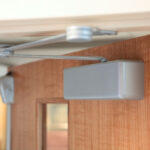
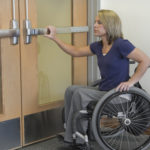


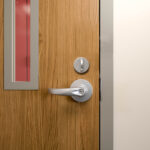


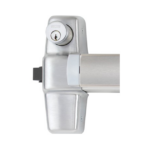

Thanks for highlighting the standards for gates. As someone who primarily works on gates its good to know where we stand with these standards.
Always a good subject to cover, as codes changed almost as much as my 7-year-old grandson changes his mind! Well, it seems like it anyway.
In a Fire Door training, our instructor told us about a court case from what was purported to be an injury in an American Airline’s Admiral’s Club in an airport in Florida where spring hinges were installed in a very tall, very heavy fire door and this resulted in a bad finger pinch.
They informed us that on a labeled door, if it’s over 7’, code says it shall NOT have spring hinges.
Any confirmation on this? Have you heard about that incident? (I have always wondered what specific airport it was.)
Hi Deviant –
I have not heard about that specific incident, but NFPA 80 does limit the use of spring hinges to 3070 doors…unless the spring hinges are listed for use on larger doors.
– Lori